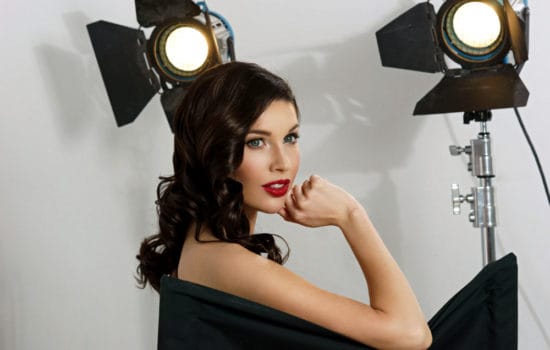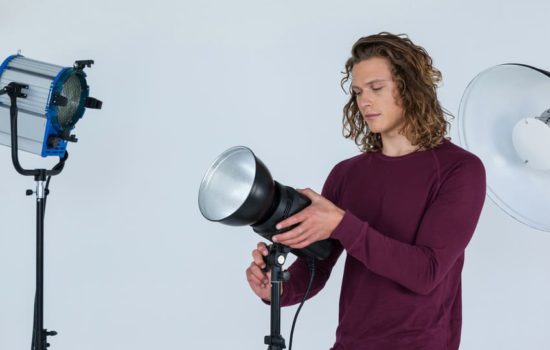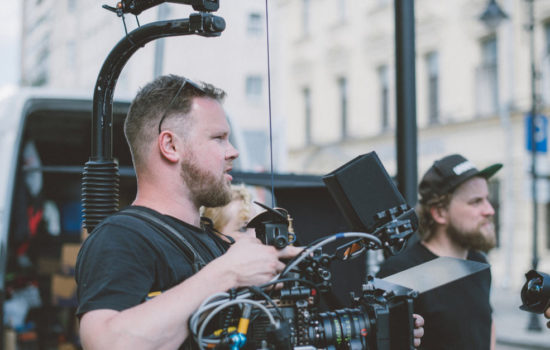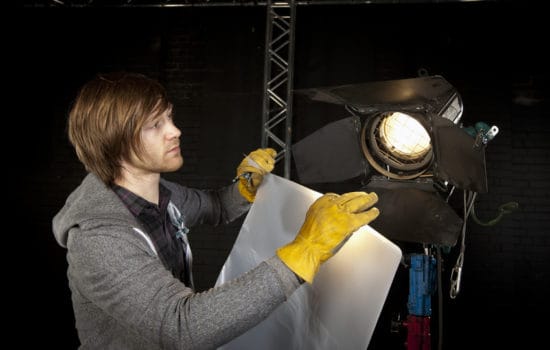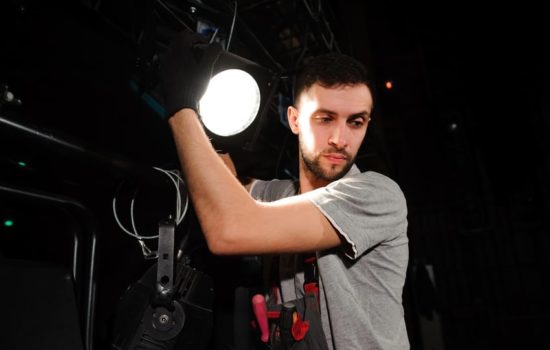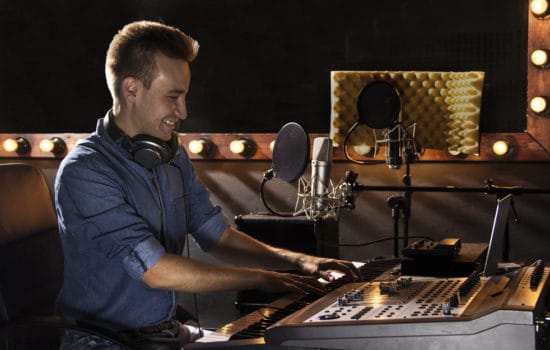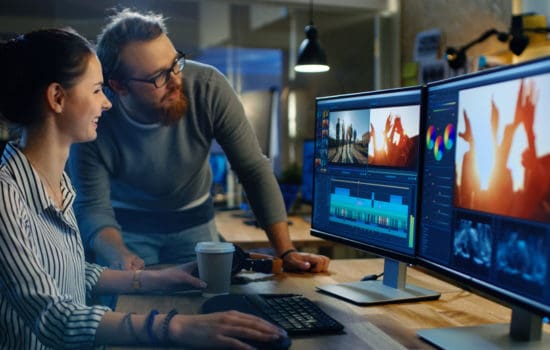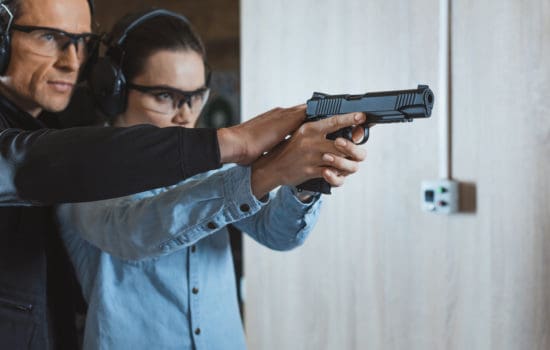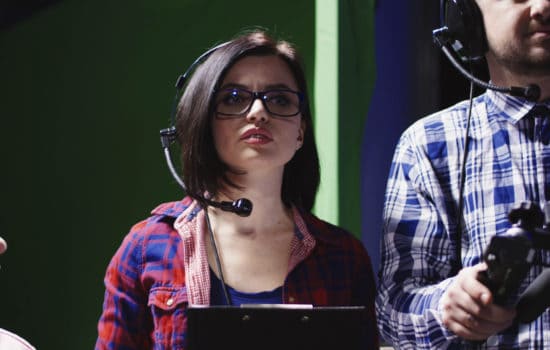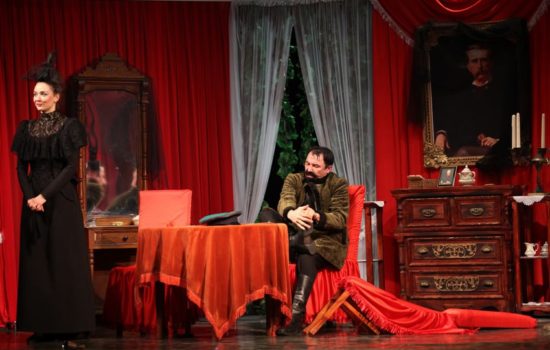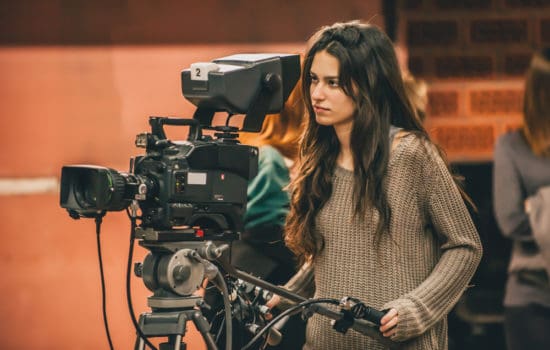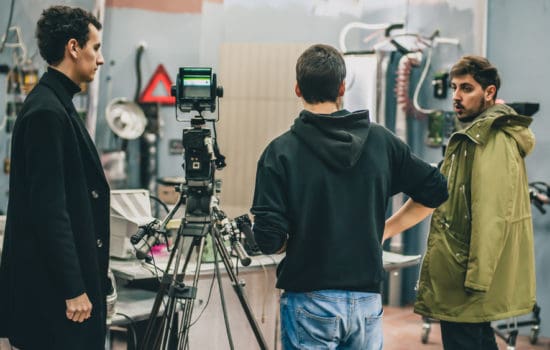Storyboarding is the time-tested process of having a Storyboard Artist draw panels of a scene in shot order that demonstrate the visual look of the story. Storyboards are often essential to helping the Director and Director of Photography really understand camera placement, camera movement, and shot compositions. They help save time and money on set.
A good Storyboard Artist is not only a talented artist who can draw, but someone who also understands film language, camera movement, and the shot descriptions including wide shots, medium shots, close-ups, dolly shots, jib shots, and Dutch angles.
Here is an example of a storyboard from an Industrial I assistant directed for the United States Government. Notice how this Artist used existing clip art while also including camera direction and voiceover to bring each frame together for a cohesive visual and narrative description.
Now here is an example of a more traditional, hand-drawn storyboard from a commercial I assistant directed for a promo featuring a toy called Pimple Pete. Again, the boards include camera compositions and voiceover creating a complete picture.
You can see the final commercial here.
Let’s hear from successful Los Angeles Film and Video Director Eli Sokhn, who has directed elaborate and beautiful productions for the likes of Why Don’t We, Nerf, Adidas, Old Navy, and Red Bull on the topic.
CIF: As a Director, what do you look for in a Storyboard Artist?
Sokhn: What I look for in a Storyboard Artist is specificity first — being able to transfer a visual that only exists in my mind onto paper. And secondly, when that visual feels loose, the chance to visually brainstorm the idea with them.
CIF: Why are boards and a shot list important to you as a Director?
Sokhn: To me it’s important because I love being efficient and accurate. Knowing exactly what’s happening gives me confidence and certainty and that creates a mood that reflects well on the team members. [Storyboards and shot lists] allow me to visit multiple scenarios before I decide it’s a good idea to film that.
It’s also more satisfying to go from imagination to ideation, to boarding and shot listing. It makes it a longer process and with that comes more scrutiny on the idea. It’s like birthing a baby — if it’s planned -– well, there are less surprises there and you know the baby is yours.
CIF: How do both help you communicate your vision to a DP and the crew?
Sokhn: That’s very simple: it follows the principle of “show, don’t tell” and that’s the most efficient communication route in a very visual medium. When everyone can see the vision then it’s easier for it to come to life.
What is previs in production?
Anna Keizer (CareersInFilm)
Filmmaking is a meticulous process for many reasons, including budget, schedule, and safety. That’s why previs – or previsualization – is a critical step for any production where visual effects will be used for a shot or scene. The individuals involved in the creation of that footage, which typically includes the Director, Cinematographer, and VFX Supervisor – map out how exactly they plan to get their desired shot ahead of the shooting of it so that there are no costly or dangerous mistakes during the actual filming process.

